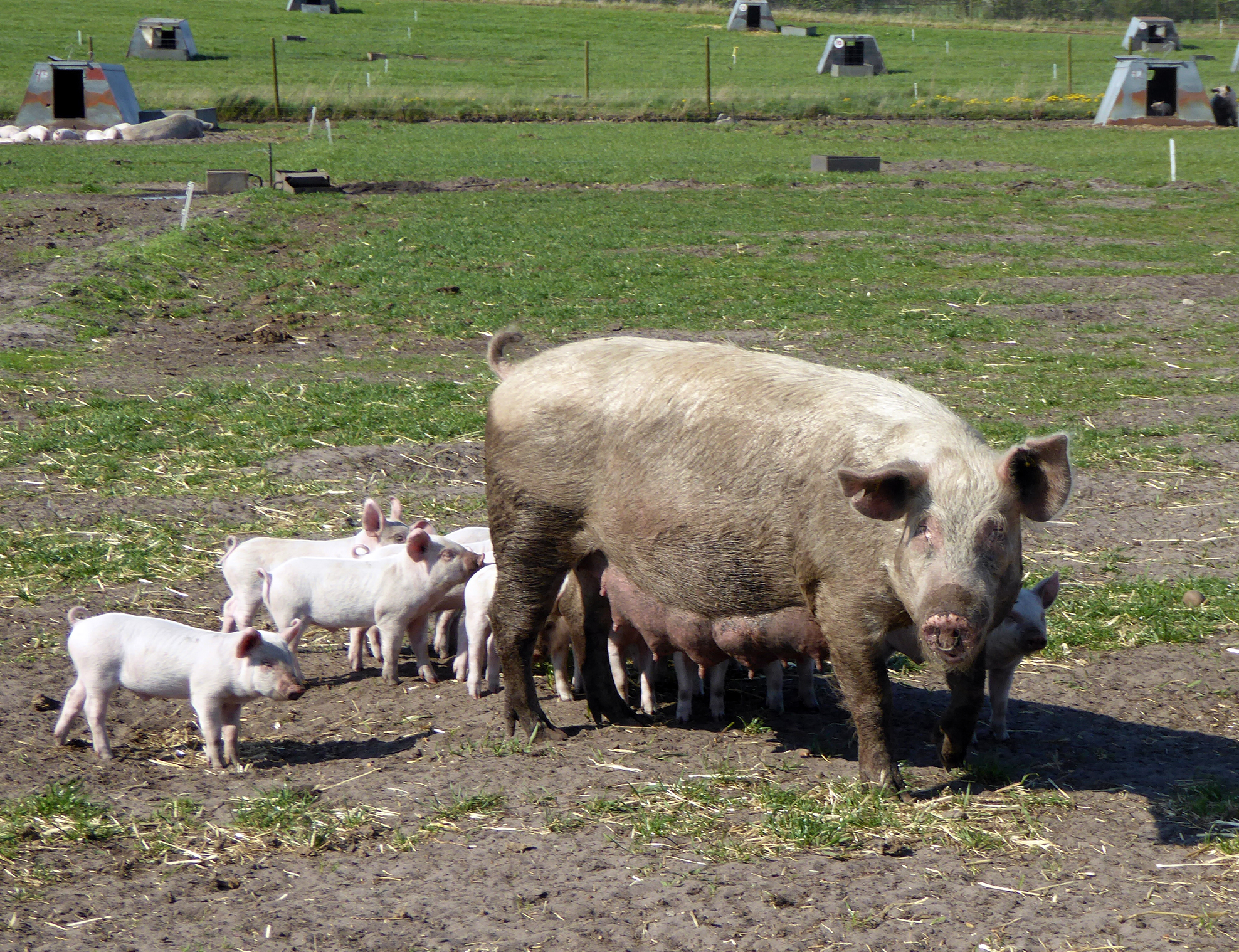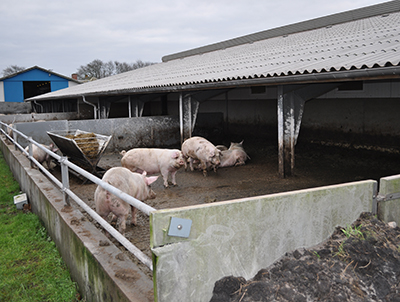Cooling zones and rooting areas for improving pen hygiene in organic pig production
In the organic production, pigs have extra space. However, they do not always acknowledge this extra space by producing the desired behavior. This may cause problems with pen hygiene. Since pigs by nature are clean animals, it appears that there are some behavioural codes, which have not yet been broken.

This places great demands on farmers when designing pens for organic pigs. The research project pECOSYSTEM aims to create a deeper understanding of the pigs' selection or deselection of dunging area and to use this knowledge to improve pen function - to the benefit of animals as well as employees and the environment.
At a workshop in pECOSYSTEM, it emerged that the two most important challenges are the design of the outdoor run and pigs' possibility to thermoregulate, and thus the project chose to focus on these aspects.
Limitations of the dunging area in the outdoor run
Previous studies have shown that more than 75% of the dunging are deposited in the outdoor run. This is consistent with the fact that pigs avoid dunging close to feed, water and lying area, which are normally located indoors. Unfortunately, often a large part of the outdoor run is used as an elimination area - even if the outdoor run is designed with one area intended to be the dunging area. Usually, this area is located at the far end of the outdoor run.
On pasture, pigs have several dunging areas, one of which is located in the area between the hut and feed/water. The question is whether it is the distance the pig is willing to walk in order to eliminate, which determines where the dunging area is located or whether areas in the paddock that does not immediately have a value for the pig are chosen as dunging areas.
In pECOSYSTEM researchers are studying, among other things, if enrichment of the outdoor area with rooting areas will increase the value of the area to the pigs, in order for them to avoid using the area for dunging.
Thermoregulation and cooling zones for pigs
When the temperature rises, the pigs choose to lie in the area intended for dunging due to the open pen partitions and wet floors, which are the coldest areas in the pen. The choice of dunging area is often justified by pigs’ needs for wallowing. As soon as the pigs have chosen the dunging area as lying area, they stop eliminating there and begin to eliminate in other areas of the pen, leading to poor pen hygiene.
This suggests that thermal conditions, for example increased air speed in the dunging area, is the cause of choosing the area for lying in the first place and subsequently the area is deselected as dunging area - and not because of pigs’ desire to wallow in their own dung.
In order to provide pigs an attractive alternative resting area when it gets hot, establishment of "cooling areas" in other parts of the outdoor run are needed, for example, shade or increased air velocity. At high temperatures, it is necessary with systems that make the surface of the pigs wet, as they cannot sweat.
The challenge of using sprinklers in large pens is to ensure that the pigs are present in the sprinkling area during the few minutes the system runs at a time. The question is whether it is possible to warn the pigs before the sprinklers start or if wallowing holes would be a better option.
Based on knowledge from pECOSYSTEM, the project ‘Improved stables for organic growing pigs’ [in Danish: Bedre Stalde til Økologiske Slagtesvin’] will be launched and the plan is to test the effect of cooling treatments during the summer 2016.


The project ‘Bedre Stalde til Økologiske Slagtesvin’ is funded by the Foundation for Organic Agriculture and led by the Center of Development for Outdoor Livestock Production.
The project pECOSYSTEM is part of the Organic RDD 2 program, coordinated by ICROFS, and it has received support from the Green Development and Demonstration Programme (GUDP) under the Environment and Food Ministry.
Read more about the project at: http://agro.au.dk/forskning/projekter/pecosystem/
Or visit pECOSYSTEM's page on ICROFS.org (for English)